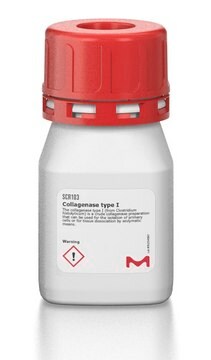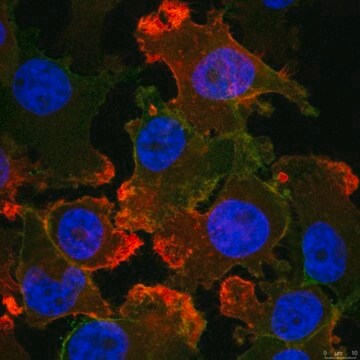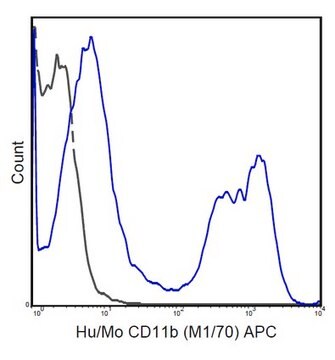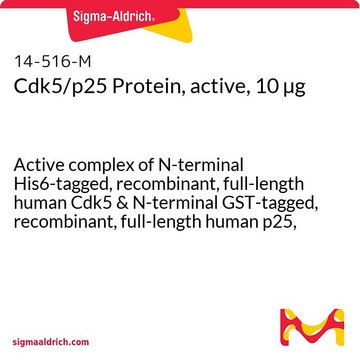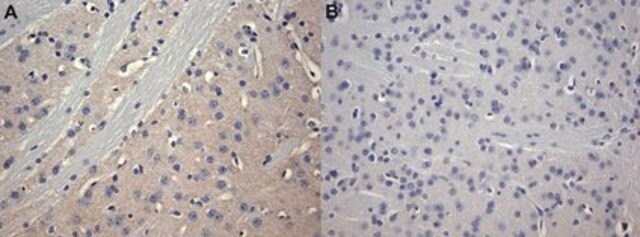MAB1852
Anti-Macrophages/Monocytes Antibody, clone MOMA-2
clone MOMA-2, Chemicon®, from rat
About This Item
Polecane produkty
pochodzenie biologiczne
rat
Poziom jakości
forma przeciwciała
purified immunoglobulin
rodzaj przeciwciała
primary antibodies
klon
MOMA-2, monoclonal
reaktywność gatunkowa
mouse
producent / nazwa handlowa
Chemicon®
metody
flow cytometry: suitable
immunohistochemistry: suitable
izotyp
IgG2b
Warunki transportu
wet ice
docelowa modyfikacja potranslacyjna
unmodified
Powiązane kategorie
Specyficzność
Zastosowanie
Immunohistology: FRESH frozen sections at 1:25. The epitope recognized by MAB1852 is formaline sensitive. Fixation in fresh, acetone at 4°C or colder is strongly recommended. Specimens must be completely air dried after acetone fixation. Formalin or PFA fixation is not recommended.
Because of the lower titer, enhanced detection systems such as our poly-HRP secondaries or biotin labelled secondary antibodies followed by SA-FITC are recommended.
Optimal working dilutions must be determined by end user.
Inflammation & Immunology
Inflammation & Autoimmune Mechanisms
Postać fizyczna
Przechowywanie i stabilność
Komentarz do analizy
Macrophages, monocytes, lymphoid organs
Inne uwagi
Informacje prawne
Oświadczenie o zrzeczeniu się odpowiedzialności
Nie możesz znaleźć właściwego produktu?
Wypróbuj nasz Narzędzie selektora produktów.
Kod klasy składowania
12 - Non Combustible Liquids
Klasa zagrożenia wodnego (WGK)
WGK 2
Temperatura zapłonu (°F)
Not applicable
Temperatura zapłonu (°C)
Not applicable
Certyfikaty analizy (CoA)
Poszukaj Certyfikaty analizy (CoA), wpisując numer partii/serii produktów. Numery serii i partii można znaleźć na etykiecie produktu po słowach „seria” lub „partia”.
Masz już ten produkt?
Dokumenty związane z niedawno zakupionymi produktami zostały zamieszczone w Bibliotece dokumentów.
Nasz zespół naukowców ma doświadczenie we wszystkich obszarach badań, w tym w naukach przyrodniczych, materiałoznawstwie, syntezie chemicznej, chromatografii, analityce i wielu innych dziedzinach.
Skontaktuj się z zespołem ds. pomocy technicznej
